
© Core Climbing 2022

Matting spec: Grey carpet top, black PVC sidewalls.
Being so close to the Peak District, Manchester has a strong climbing heritage going back almost as far as the birth of the sport itself in the UK. Most people who’ve ever climbed on gritstone will have had the pleasure of being humbled on a route first climbed by Manchester plumber Joe Brown in the 1950s. Nearby Altrincham sported one of the earliest indoor climbing walls in the country at least 40 years ago, and as of summer 2021 Manchester boasts a brand new bouldering facility in BlocHaus.
A far cry from those early walls, BlocHaus is the brainchild of owner Richard Wainwright, and the wall sports a couple of unusual features. In addition to the standard drop-off problems you’d expect in a modern centre, BlocHaus has a section of wall where the problems are set to top out, perfect for climbers honing their skills before a trip to Fontainebleau. The wall also features an impressively tall, steep section above innovative sloping matting, for those looking for longer power-endurance boulder problems or training for routes – in fact problems on this ramp feature are much longer than many Peak District sport routes!
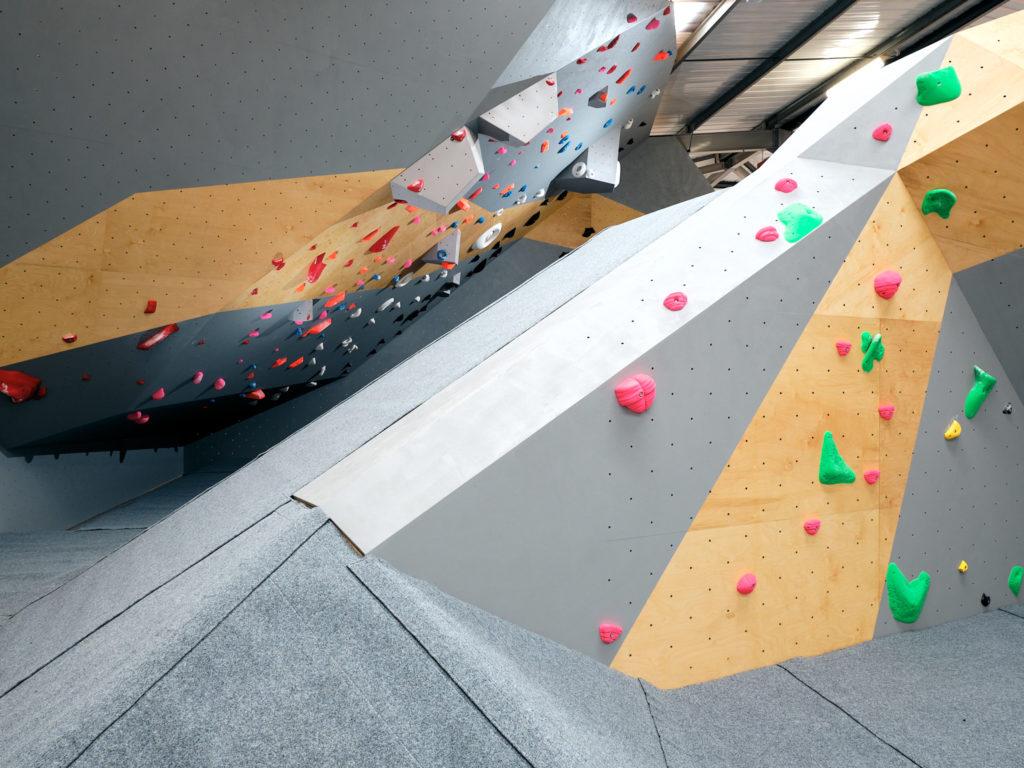
BlocHaus is situated in the east of the city, an area served by a couple of existing climbing centres offering bouldering & routes, but with none being a dedicated bouldering facility it seems BlocHaus is filling a gaping hole in Manchester’s repertoire. The M67/A57 even offers easy access for Manchester climbers retreating from the Peak due to bad weather – a not unusual occurrence. But had things turned out differently BlocHaus might have found a home just over the Pennines in Huddersfield, as Richard elaborated to us when we caught up for a chat during final preparations for opening.
“I was living just this side of Huddersfield, and at the time Huddersfield didn’t have a bouldering centre….So it seemed a fairly obvious approach……but I hadn’t really realized how big a deal it was, with the shortage of suitable premises.“
There’s a long history of climbing walls in the UK repurposing existing spaces. Some of the earliest walls piggy-backed on educational or sports facilities. One of the first was the Leeds Uni wall, built in the 1960s in a corridor. The famous Sheffield Poly Wall was built inside a squash court, and Darlington’s 60ft-high Dolphin Wall was even built in a sports facility’s goods lift shaft.
Still today the names of many current climbing centres allude to the original purposes of their homes – The Foundry, The Depot, The Works. The casual observer might assume that every large town in the North of England with their post-industrial heritage would have no shortage of suitable venues for a bouldering centre, but Richard found otherwise.
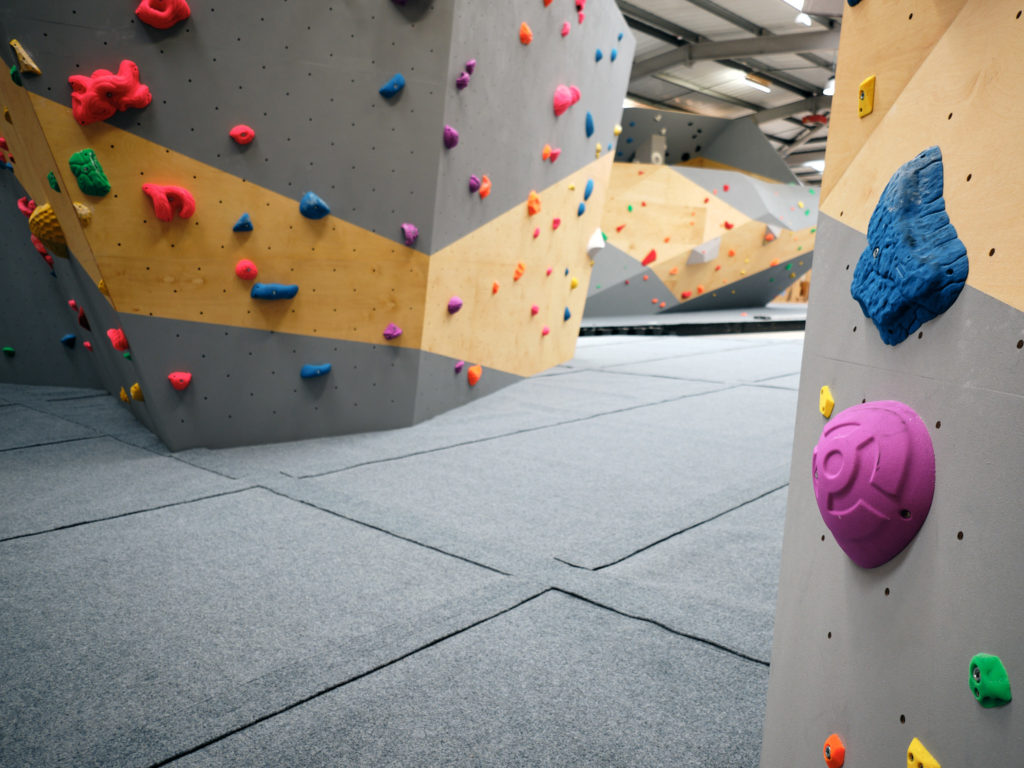
“I suppose most towns must have a history where there would be some sort of industry that requires such-and-such building. And then something changes, and there’s empty units available. And I don’t think Huddersfield’s any different – certainly there’s units that aren’t being used for what they were originally used for.“
“But there’s buildings out there approaching the end of their life. So it’d be massive work to do anything with them. Then actually the people who own them probably don’t want somebody coming in who wants a long lease, because they probably want it to be a housing development. So it’s not as easy as I thought it was going to be. But I think when I started running the numbers for Manchester, it seemed like maybe I should have been looking over here all along. It’s quite a big market for climbing.“
At BlocHaus’ eventual home in the Openshaw area, despite being ostensibly a standard commercial unit (thankfully with plenty of natural light), the space does have a colourful recent history, having previously been used as a church. Perhaps it’s appropriate then that as a bouldering wall it once again has a chance to be a vibrant hub of a community.
Creating a space that was enjoyable to be in, that would provide all the challenges a boulderer might need to progress, and yet simultaneously ‘get out of the way’ and be as easy as possible to use was a motivating factor for Richard when designing the wall.
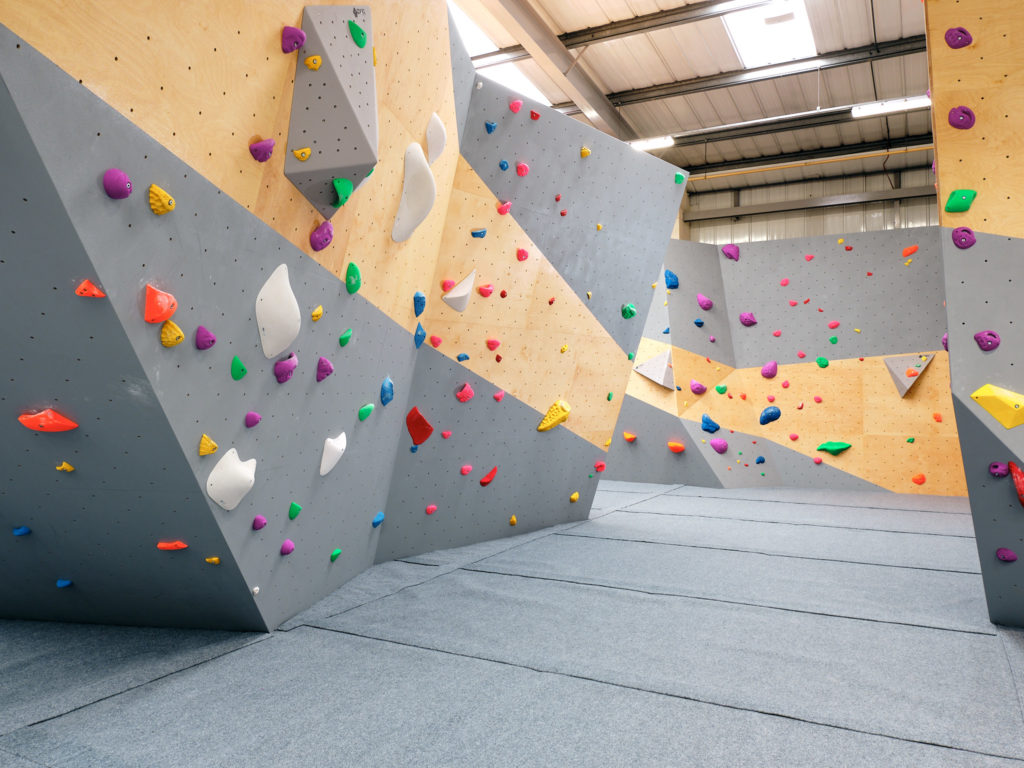
“We live in England, so if you’re gonna enjoy climbing, you probably should enjoy being able to go to the wall as well as being outside. [BlocHaus] is slightly different feeling, just nicer to navigate, to achieve what you went there to do; you don’t want anything holding you back and even if it’s just just how a place makes you feel….I guess a lot a lot of European and North American walls must have caught my eye.“
“I had a bit of a reality check at one point where I thought, well, I can’t just build a climbing wall just for me and expect people to turn up. But the more I thought about it, actually, all the sort of stuff I want is not too bad a blueprint for catering for quite a lot of different people. At the end of the day, I like going to a nice cafe!”
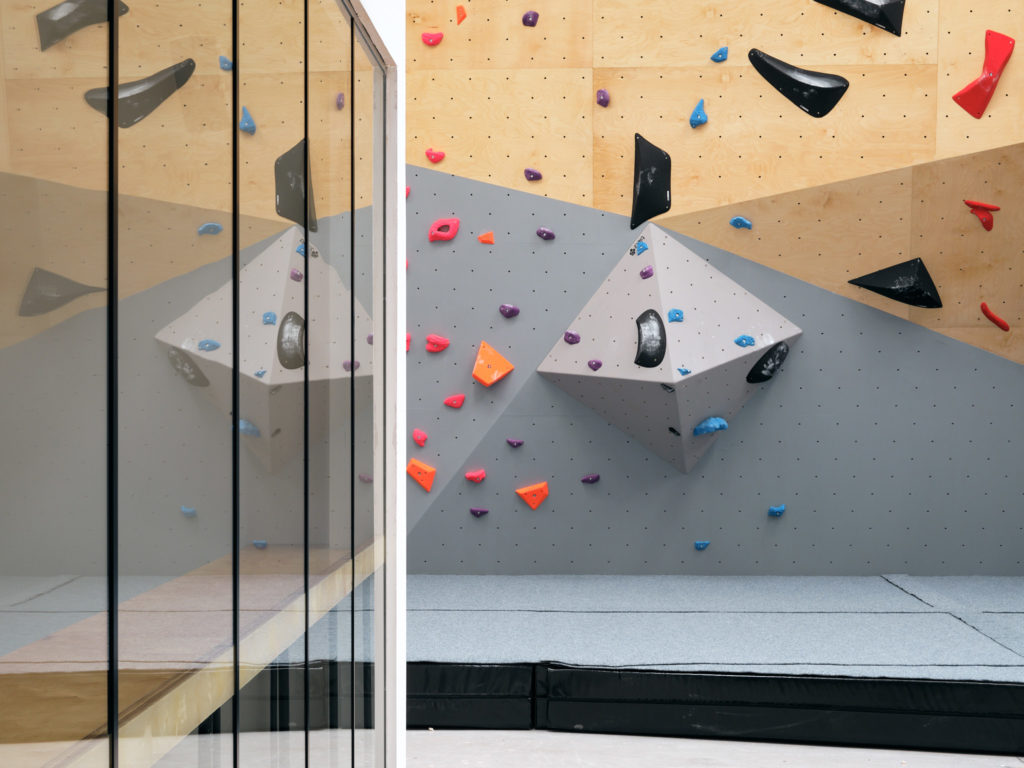
For the wall itself, the design and build of the actual structure itself didn’t seem to faze Richard, with his engineering background and having previously worked in the climbing wall industry. Many new walls chose to buy-in for construction and leave the build to specialist contractors. However, Richard chose Core Climbing for the crucial job of providing the matting.
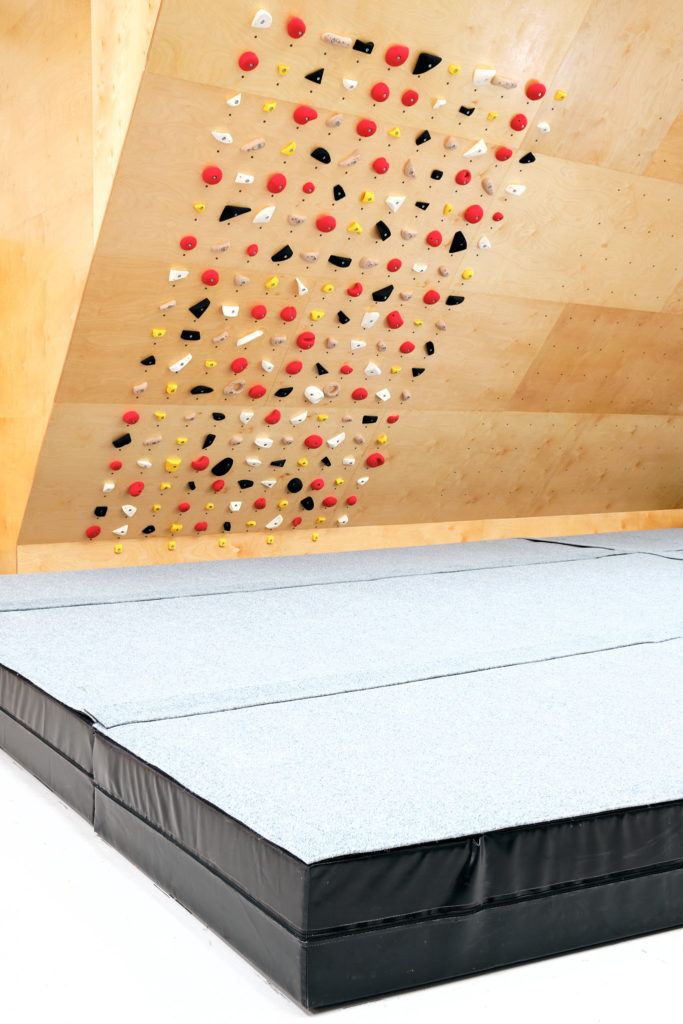

“I would have always used Core for their holds anyway, regardless. But matting was a big issue because it’s so expensive. I did have to put quite a lot of thought into it. The options are maybe down to two or three people where [the matting] is part of their full time offering. It’s not just some little sideline. It’s what they do. That’s what they know about.”
“I know people that have done their own matting as well. And to be perfectly honest the sort of price difference wasn’t enough for me to take a gamble on somebody that wasn’t a professional. It’s not just the money, it’s the amount of time you’d have to spend figuring it out. You’d end up making mistakes.”
“Ultimately, using Core seemed like a no-brainer.”
Words and images by Dave Parry www.daveparryphotography.com
Visit BlocHaus here, and on Facebook and Instagram.